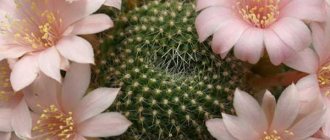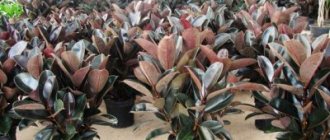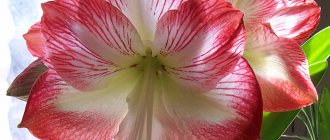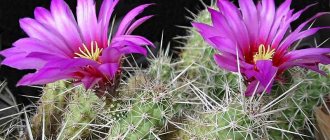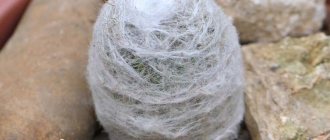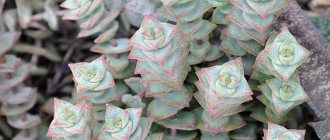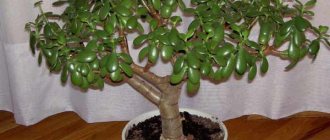The cactus family includes many plants that surprise not only with their beauty, but also with their shape. Forest cacti are especially different from other representatives in their appearance. The genus of these plants includes about 65 species of epiphytes. They are characterized by different shapes of shoots: ribbed, leaf-shaped, cylindrical, etc. These small epiphytic shrubs can reach 1 m. A feature of the plants is the presence of aerial roots.
Forest cacti often grow on trees. In this case, they receive nutrients from organic residues that accumulate on the bark. Plants obtain moisture from the air, absorbing it through the surface of the leaves.
Forest cacti can also actively germinate in small amounts of humus, in rock crevices. Plant roots can attach themselves to rocks.
The natural habitat for these cacti is the tropics of Central and South America. But many of us know these plants as indoor plants.
Features and description
Representatives of this species were discovered for the first time in the forest zone of the South American continent. They grew on trees in the form of green leafy growths. These are epiphytes - plants belonging to the genus Cactus, characterized by a brown-green or green color. They often lack spines.
The most attractive thing about epiphytic cacti is their flowers. They bloom in spring and summer. The buds of these plants are characterized by a wide palette of shades (pink, white, yellow, crimson, etc.). The shape of the inflorescences is also different; they can be both small and large.
Epiphytes are often used in hanging gardening. They make a great home decoration. Leaves of plants with blossoming buds hang attractively and gracefully from the flower pots. These flowers are not only an excellent decoration for the home, they purify the air well. Bioenergetics experts also talk about the positive effect of plants on normalizing the energy balance in a room.
Lighting and temperature
The ambient temperature must correspond to the growth phase of the plant. During the rest period, it should not exceed 15-17 0C, at other times the temperature should be within 18-22 0C.
Particular attention should be paid to the lighting of the room. After all, the plant’s natural habitat is the tropics. The light should be diffused but bright. It is necessary to avoid direct sunlight on plant shoots. Experienced gardeners recommend placing flowerpots with home cacti on the east side. Photos of forest cacti will not leave any amateur gardener indifferent. After all, such a plant must be on the windowsill in every apartment.
Care
When caring for forest cacti, you should adhere to several important rules:
- Maintain high humidity levels by spraying.
- Reduce moisturizing in winter to a minimum - 2 times a month. Stop spraying altogether.
- Do not spray cacti during flowering.
- Keep crops in bright, indirect light.
- Transplant annually into a container with a larger diameter by 1–2 cm.
The best place to keep forest cacti is an eastern windowsill. When growing on a north window, additional lighting will be required; on a south window, shading from direct rays of the sun will be required.
In summer, cacti feel good at +20...+30°C. In winter they need coolness. At this time, forest cacti are kept at +15...+18°C. Temperature drops to +10°C and below are dangerous for plants. At the same time as the temperature drops, the amount of watering is also reduced. In cold weather, it is important not to overwater cacti, otherwise they may rot.
In summer, plants need to be watered 2 times a week. The water should be at room temperature, always standing for 1–2 days. Water the plants at the roots.
All cacti, except epiphyllum, must be replanted once a year after flowering. Epiphyllum will bloom only if it grows in a cramped pot.
Cacti do not need frequent feeding. Fertilizers can be applied no more than once a month.
Cactus propagation
Most forest cacti reproduce vegetatively in summer or spring. To do this, you need to carefully cut the cuttings (the top of the stem). You can also use side shoots that already have rudimentary roots.
The sprout must be planted in a small pot in a moist peat-based soil mixture. It is recommended to cover the container with transparent film or a jar to create greenhouse conditions. Within a few weeks, the root system will begin to actively develop.
Difficulties in reproduction are caused by cacti that do not have children. It is necessary to select a healthy side shoot, which is carefully cut with a clean, sterile knife. The cut site is dried for 3-4 days. The cut is sprinkled with a crushed tablet of activated carbon. Afterwards, the cactus can be rooted in a moist substrate, the basis of which will be peat.
Today, flower growers distinguish between many original species and their hybrids. Let's consider the popular names of forest cacti, which can most often be found among amateur gardeners.
Rest period
The cessation of growth and flowering in most epiphyllums occurs in winter. It is during this period that there is no need to wash the flower and fertilize it. They also reduce spraying and watering, and monitor the temperature - too hot a temperature is not very favorable for the cactus.
One interesting fact that not all epiphyllum owners know about is the gift of fruit. After flowering, a kind of peduncle is attached to the stem - this is the fruit that can be eaten! Since it is prickly, it is first cleared of thorns. Most people who have tasted the epiphyllum fruit associate the mixture of persimmon and banana flavors.
Zygocactus
This plant is also known as Schlumberger. This cactus is considered the most common; it is loved for its unpretentiousness and ease of care. The plant is very beautiful, delicate during flowering. The zygocactus leaf consists of many segments with sharp tips. Schlumberger blooms in raspberry, white, pink, and lilac colors.
Diseases
Epiphyllum without good care will become an object for diseases. The plant is susceptible to fungal infection and viral mosaic.
Viral mosaic infection is very difficult to cure
When a flower is watered with cold water, over time it becomes covered with round spots - these are signs of a fungal infection. Darkening is clearly visible on the stems. You need to dig up the bush, dry the roots, removing damaged ones, and treat the entire crown and roots with a fungicidal preparation. In the future, try not to flood the flower.
If small white spots appear on the stems, it means that the plant has become infected with viral mosaic. It is extremely difficult to save a diseased epiphyllum; it is better to prevent the disease by protecting it from contact with diseased flowers.
Epiphyllum
The name of this cactus is often confused with the general name of the family. But this plant has its own unique history. In the literature, this flower is often called a cactus orchid due to the height of the stem and the splendor of the flowers. All buds are collected in a funnel, which is framed by a large number of pink petals. The stem is cross-shaped, in the recesses of which there are dense leaves.
Pereskia
This cactus is extremely beautiful when in bloom. The flowers are pale in color and visually resemble a wild rose. The bush itself is small in size. It consists of a large number of stems with dense, glossy, oval-shaped leaves. Pereskia cactus is undemanding to growing conditions and grows well at home with proper care.
Reviews from flower growers
I love this flower for its bright pink-raspberry star buds. Each time the flowering occurs on New Year's Eve, and also in the middle of summer, it seems. The plant loves water very much and does not tolerate bright light and heat at all. Only there are problems with the shoots - they don’t take root.
AquaMarinka
https://smoldacha.ru/forum/komnatnoe_cvetovodstvo/topic_27
It’s not for nothing that I called Decembrist the flower of winter. It begins to form buds at the end of November, and in December, when it is already winter outside, the Decembrist begins to bloom on your windowsill. How beautiful it is. I have a pink and white Decembrist growing. This is an unpretentious and grateful flower. Don’t forget to water it and don’t move or touch it during flowering, it doesn’t like it, it starts to drop its buds, and then your Decembrist will delight you with its beauty from December to March. Now March is approaching, and my Decembrists have begun to put on buds again. I think it will still bloom throughout March. By the way, he is not afraid of the heat either. I’m on the sunny side, but he withstands this heat as if nothing had happened. And he doesn’t get capricious when I open the window for a long time in winter. Nothing matters to him. A real Decembrist!
Elena
https://www.imho24.ru/recommendation/44738/
Remember this wonderful song? Do you want to see how flowers bloom in November, when the first frosts have gripped the ground and the white shine of the morning frost outside the window leaves no chance for greenery? The Decembrist flower on the window is just what you need in this grey-white hazy time!
Lens
https://irecommend.ru/content/dekabrist?new=1
Decembrist can have pink and carmine-red and purple flowers. And it usually blooms after stress, if it was cool, if it was not watered for a long time and it was dry, and there are also varieties according to flowering periods: winter and summer. It bloomed beautifully. You can’t touch it, move it or turn it during flowering; it will immediately drop its buds.
Okluba
https://www.forumhouse.ru/threads/53931/page-4
Conclusion
Forest cacti are plants that have taken root well at home among our compatriots. Everyone knows the Christmas tree that blooms on New Year's holidays. This plant pleases the eye, gives hope and faith in a bright future. After all, in winter, bright cactus flowers help fight depression.
Photos and names of forest cacti will help every novice gardener decide on the future inhabitant of his windowsill. These unpretentious but sophisticated plants will decorate your home and purify the air. A wide variety of types allows you to choose the perfect option for your home.
Main types
The culture has about 65 genera, further subdivided into varieties. All have features of appearance, but most are cultivated in the same microclimate. Flowering time varies depending on the genus.
Names of forest cacti most common in home floriculture:
- zygocactus;
- Pereskia;
- rhipsalidopsis;
- epiphyllum;
- hatiora;
- melocactus;
- prickly pear.
Zygocactus
The plant goes by several names, one of which was named in honor of succulent collector Frederick Schlumberger. Popular names: Decembrist, Christmas cactus, Decembrina, Rozhdestvennik. In Latin the genus is called Schiumbergera. In nature, it is distributed in the southeast of Brazil at an altitude of 900-2800 m above sea level. It grows on trees, so moisture does not stay on it, most of the time it is quite dry.
This type of forest cacti is represented by epiphytic branching shrubs. The branches are flattened, segmented, jagged along the edges, there are no thorns. Flowers appear in winter, have a distinct tube, and are white, pink, red, orange or light purple. At home, zygocactus is grown hanging or in high containers. Propagated by stem cuttings in spring, early June.
Pereskia
Pereskia is a species of forest cacti from Central and South America. Externally, this variety is very different from most representatives of the Cactus family, since it has leaves. The spines are present, arranged singly or in a bunch in the axils, and help to hold on to trees. The leaf blades are green or purple in color, lose their brightness with age, and dry out. During the dormant period, the foliage falls. Forest Pereskia cacti are divided into 18 species of bushy and tree-like plants.
Rhipsalidopsis or Easter candle
Rhipsalidopsis is an epiphytic shrub from South America. Light green shoots with spines at the ends consist of 4-6 flat or ribbed smoothed segments 3 cm wide. When grown in the sun, the color may be reddish. The inflorescences consist of approximately 3 white, pink or dark red flowers with a diameter of 4 cm with symmetrical, even corollas. Flowering begins in spring.
Epiphyllum
Epiphyllum is a genus of forest cacti with 20 species. It is characterized by the presence of stems similar to leaves on which flowers appear. Epiphyllum is also called phyllocereus, phyllocactus, listocactus. The variety in its natural environment is distributed in the subtropical and tropical regions of Central and South America up to Mexico.
The shoots are long, branched, creeping or directed downwards, often having wavy edges. Mostly the stems are flat, but there are triangular ones. Adult specimens have no spines. Aerial roots may form on the branches. The flowers are up to 40 cm in diameter, white, funnel-shaped, covered with hairs, scales, and small spines. Flowering occurs in spring or summer.
Rhipsalis
The genus Rhipsalis is a forest cacti from North and South America, Africa, and South Asia. There are about 50 species. The only representative whose distribution range extends beyond America. Epiphytic, abundantly branching shrubs with aerial roots. The shoots are covered with soft bristly down, there are no thorns. The stems are directed downward, there are ribbed, rounded, similar to flat leaves. The flowers are small, white or pale pink, growing along the entire branch or closer to the top. Flowering begins in late winter or early spring. The fruits are berry-like, juicy, white, pink or black in color.
Gatiora or Hatiora
Hatiora grows in the tropical forests of Brazil, located on the trunks and branches of trees and the ground. The ambient temperature here does not drop below +18 °C, and the humidity is high. The stems are jointed, fleshy, cylindrical, pin-shaped or flat in shape. The flowers are yellow, pink or red and form only at the ends of young shoots. Fruits with yellow and white berries. Hatiora propagates by seeds and cuttings.
Melocactus
Melocactus is also called the melon cactus and is native to the Antilles. Forms a single spherical or cylindrical fleshy stem with pronounced ribs, straight or curved spines. The variety is distinguished by the presence of a cephalium - a generative shoot at the top of the plant. The surface of the skin is densely covered with bristles and fluff, and has no chlorophyll or stomata for gas exchange.
Prickly pear
Opuntia has more than 190 species, distributed mainly in Mexico, although it is found in other areas of North and South America. The shoots are oval, flattened, branching. In its natural habitat, the bush grows 2-4 m high. Prickly pear is covered with thorns, including sharp and hard ones, which are easily separated from the stem. Blooms with yellow or red flowers.
